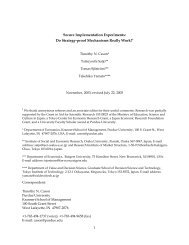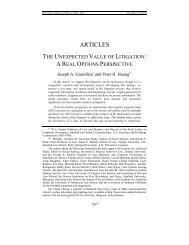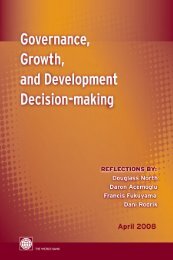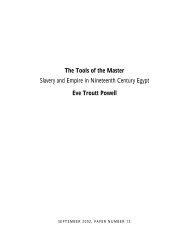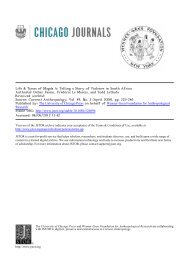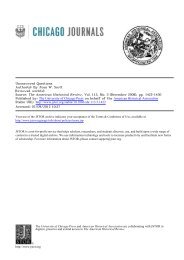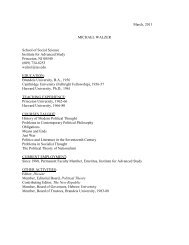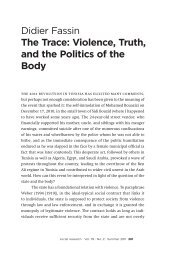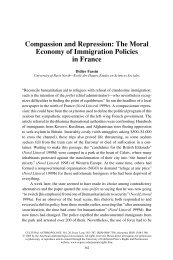Peter H. Huang Harold E. Kohn Chair Professor of Law James ...
Peter H. Huang Harold E. Kohn Chair Professor of Law James ...
Peter H. Huang Harold E. Kohn Chair Professor of Law James ...
You also want an ePaper? Increase the reach of your titles
YUMPU automatically turns print PDFs into web optimized ePapers that Google loves.
Emotional Impact Analysis<br />
countries and over time reveal remarkably consistent patterns in what determines an individual’s self-<br />
reported happiness. 275 For example, a British economist and an American economist estimated that<br />
having a lasting marriage, as compared to widowhood, generated as much happiness on average as<br />
receiving approximately $100,000 in 1990 dollars annually. 276 Similarly, these researchers found that in a<br />
random sample <strong>of</strong> approximately 16,000 American adult females and males, increasing the regular<br />
frequency <strong>of</strong> sex from once a month to once a week had an impact on happiness for an average American<br />
that was equivalent to $50,000 <strong>of</strong> additional income yearly. 277 They also discovered that undergoing a<br />
divorce produced unhappiness that was equivalent on average to a reduction <strong>of</strong> $66,000 per year. 278<br />
Again, to be clear EIA does not advocate nor endorse that regulators have to monetize a rule’s<br />
emotional impacts to be able to account for, measure, and quantify emotional impacts. In contrast, Adler<br />
explicitly advocates monetizing anxiety or fear about certain non-financial risks by engaging in what he<br />
calls fear assessment, copying the phrase risk assessment. 279 His proposal argues that contingent-<br />
valuation surveys are the appropriate way to price fear. 280 He states, “what about welfare-enhancing<br />
mental states, like cheerfulness, happiness, serenity, excitement, and pleasure? Shouldn’t agencies<br />
generally engage in a broad practice <strong>of</strong> hedonic assessment, including but not limited to fear assessment?<br />
This seems incorrect.” 281 This Article disagrees and specifically endorses that agencies can and should<br />
engage in a broad form <strong>of</strong> hedonic assessment, namely EIA. In fact, Adler’s quotation specifically cites<br />
three pages from a book about happiness economics, which provide four examples <strong>of</strong> how measuring<br />
275 See generally, Frey & Stutzer, supra note 262; and FREY & STUTZER, supra note 272.<br />
276 David G. Blanchflower & Andrew J. Oswald, Well-Being Over Time in Britain and the U.S.A., 88 J. PUB. ECON.<br />
1359, 1373 (2004).<br />
277 David G. Blanchflower & Andrew J. Oswald, Money, Sex and Happiness: An Empirical Study, 106 SCAND. J.<br />
ECON. 393, 401-04 (2004).<br />
278 Id. See also Jonathan Gardner & Andrew J. Oswald, Do Divorcing Couples Become Happier By Breaking Up?,<br />
169 J. ROYAL STAT . SOC’Y A 319 (2006).<br />
279 Matthew D. Adler, Fear Assessment: Cost-Benefit Analysis and the Pricing <strong>of</strong> Fear and Anxiety, 79 CHI.-KENT<br />
L. REV. 997 (2004).<br />
280 Id., at 1024-34.<br />
281 Id., at 986-87 (footnotes omitted).<br />
44



